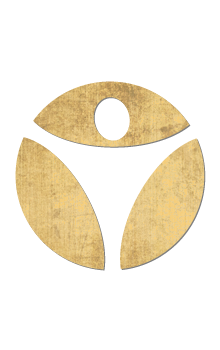Beginner’s Yoga for Lower Back Pain – Why Yoga is a Great Way to Ease Low Back Pain
- Updated on: December 28, 2021

Yoga for Lower Back Pain
Did you know that the majority of people on this earth experience back pain at some point in their lives? Back pain is something that most of us know all too well. Between the increase in use of electronics and the fact that many people sit at their desks hunched over and immobile most of the day, it makes sense that so many would be dealing with back pain.
Did you know that yoga can actually help with back pain? In fact, you can even focus the practice more on the lower back if that is where you hold your discomfort. If you suffer from back pain, there are actually ways to incorporate yoga into your routine to help combat discomfort. Even if you have no experience with the practice, it is even possible to do beginner’s yoga for lower back pain.
How to Be Safe Practicing Yoga for Low Back Pain for Beginners
Pick the Right Class- It is important to first pick the right practice for you. Choose a class that is gentle, for beginners, or meant for back pain.
Talk to Your Instructor- If you suffer from lower back pain, let your instructor know ahead of time to ensure that you are offered the proper modifications and told if there is anything you should avoid doing. This also ensures that you have time to ask any questions about anything you might be unsure about.
Props and Modifications- Make sure that you have the right props for your practice. If you are in a studio, you should have access to props. If you are at home, you should ensure that you have supplied the necessary props for your practice. Great props to use include blocks, straps, bolsters, pillows, and even chairs. If there are certain poses that are too difficult for you or cause you pain, there are many ways to modify them to make your practice safer.
Should You Combine stretching with Self- Myofascial Release Techniques?
You can absolutely combine stretching with self-myofascial techniques. Yoga can actually help to provide myofascial release in the body, and it can be included with other self-myofascial techniques as well!
While self-myofascial techniques can be first used to release knots and strain while activating the parasympathetic nervous system, stretching can be used afterwards when the body is so much more open and released. By combining these practices, you can do more for your body faster, relieving pain while reducing strain and inflamation.
Do Massage Balls or Foam Rollers Help with Lower Back Pain Relief?
Massage balls and foam rollers can both be very helpful in reducing lower back pain. Massage balls can be used to massage out tight knots in the back of the body while foam rollers are extremely helpful in opening up and stretching the fascia. This can relieve pain and improve your flexibility and range of motion in the joints and muscles.
If you want to check out an amazing program that we offer for specifically combining myofascial release techniques with yoga, click here to learn more about Yoga Release. This program offers four targeted routines for the shoulders, head and neck, lower back and hips, and knees and ankles, making it a great option for reducing pain all throughout the body.
Best Yoga Poses to Build Core Strength to Prevent Low Back Pain
Bridge Pose- Start on the back with your knees bent and bring your arms down by the sides. As you inhale, press into the hands and lift the knees up, keeping the feet flat on the ground. As you exhale, either keep the hands where they are or bring them closer to one another beneath the hips for more traction. You can also use a block here under the glutes for more support. Hold this pose for at least five to ten breaths before exhaling to come back down.
Plank Pose- Starting on the hands and knees, extend the legs straight behind you with the toes tuck and the core hugged in. If you can not hold this pose, you can always bring your knees to the ground for more support. Keep the hands directly beneath the shoulders and tuck the hips as you hold the plank for at least five to ten breaths. Breathe deeply.
Boat Pose- Starting sitting up, bring the legs out in front of you and take the hands behind you, flat to the ground. Bend your knees and extend them out in front of you and then press them away from the body. You can keep the knees bent or you can straighten them. Reach your hands towards your legs if you can. If you can’t, then either keep the hands on the ground behind you, or bring them to your thighs. You can also wrap a strap around the feet here, holding onto it with the hands for support. Or, if you need more traction, you can hold a block between the thighs, squeezing them together. Hold this pose for at least five to ten deep breaths and then exhale to come back down.
How to Modify Yoga Poses for Beginners with Back Pain
Modifying Poses
Understanding how to properly modify poses can prevent you from getting hurt when practicing. If you are working out in a class or studio, your instructor should be able to offer you alternatives to poses that are too hard or intense for you to be doing. An example of modifying a pose for low back pain can be seen in bridge pose. With the deep stretch that bridge pose provides, sometimes, the pose can be too intense for some. In this situation, a block could be placed beneath the glutes to support you here.
Another example of a modification can be seen with downward facing dog. It is important to keep the back long and the spine stacked with the core engaged in this pose, but most people round the back to force the heels to the ground. This is not the correct way to do this pose. If you were unable to keep the spine long, a modification would be to keep the knees bent and the heels off of the ground. You could also use a block between the thighs here for extra support to keep the core strong and the glutes engaged.
Modifying with Props
Using props can be incredibly helpful for the lower back when practicing yoga. Props can include blocks, straps, bolsters, and even chairs. While we just looked at some example of how to use blocks in a pose, let’s take a look at how to use other props to support the lower back during yoga. Straps can be used to help extend further into a pose when your arms do not quite reach. If you were reaching towards your toes in a seated forward fold, you could use a strap around the feet and hold onto it with the hands to keep your spine long and your core engaged. You might also use blocks here to rest your hands on besides either side of the legs.
Bolsters, which are like oval yoga pillows, can be used to rest on or to offer you more support. In seated forward fold, you could place a bolster on top of the legs to fold over to hold you up.
Chairs can be used if you are unable to practice on the mat or if you need a bit of extra support during your practice.
How Often Should You Do Yoga to Help with Back Pain?
For lower back pain, having a regular yoga practice can be incredibly helpful. This does not mean, however, that you have to practice every single day, but you definitely can if you would like to. If you have other exercise routines as well, you can intersperse yoga throughout your week with them to stay up and moving.
Shorter Practices- If you are doing shorter practices that are around ten minutes, then a daily practice is best.
Mid-length Practices- If you are doing a mid-length practice that is around twenty to thirty minutes should be done about three to four times a week.
Longer Practices- For practices that are forty minutes (or more), it would be best to do at least once or twice a week for the best results.
How Long Do You Have to Stick With Yoga to Reduce Lower Back Pain?
How Often to Practice
While everyone is different with how often they should be practicing yoga, having an ongoing practice is usually best for everybody. This is why it is good to keep your yoga practice going if you can. If you are not able to keep practicing, then doing yoga for at least a few weeks will have some results. In order to see real, faster results, you will want to have at least twenty minute practices a few times a week for at least two to four months.
Why You Should Keep Practicing
The problem is, when you stop doing yoga, if you go right back to your old habits and routines, you might revert back to how you were before, finding that the back begins to hurt again. However, if you use your new yoga habits to avoid reverting back to old routines, you might be able to get away with maintaining your back health. For example, if you were to use mindfulness techniques that you learned in yoga to be aware of how you are holding your posture, you might be able to avoid reversing your progress. If you were to use strengthening techniques to integrate into your other exercise routines, this might allow you to keep your back healthy as well.
Best Body By Yoga Programs for Beginners With Back Pain
Body By Yoga offers a variety of yoga programs for you to choose from. Our Better Back Yoga is our best program for back pain. It involves three practices that are twenty minutes long, and a free ten minute class as well. Our first class focuses on stretching while our second and third are themed to help with flexion and extension. Our bonus ten minute class aims to help with immediate back pain relief. If you want to check out this program, click here!
Recent Posts
Categories
Related Articles
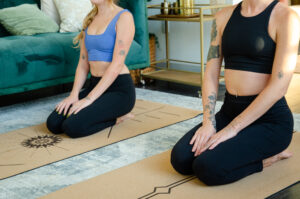
Breathing technique to improve your yoga practice

Restorative Yoga Stretches
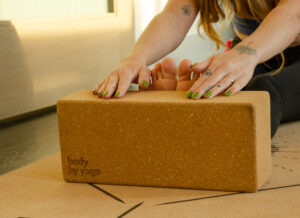
Benefits of yoga before bed
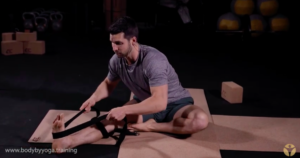
Good Stretch For Lower Back And Hamstrings
Related Articles

Back Pain Relief
A reclined twist can help get rid of back pain or prevent it from happening. While in this position make sure to keep both
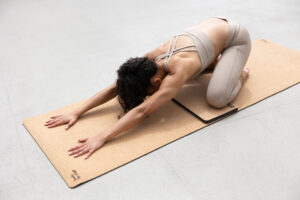
Tips to prevent back pain
Back pain can happen to anyone. We want to help you get ahead of it, so we put together some tips and classes to prevent

Can Yoga Cure Low Back Pain?
Yoga for Low Back Pain Do you deal with low back pain? If you suffer from low back pain, you are not alone. In fact,
